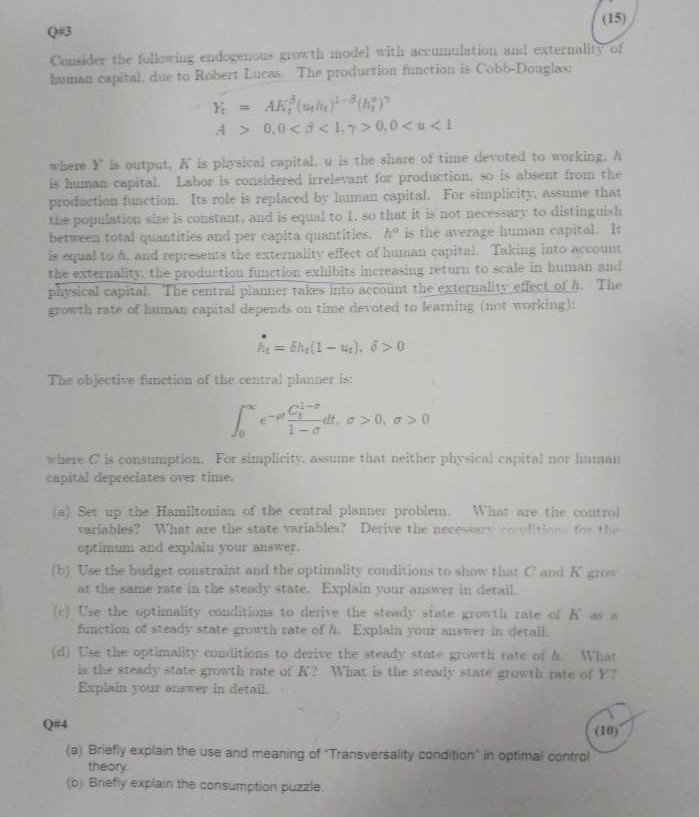Q=3
Consider the following endocenous grow the model with accumulation and externality of
human capital, due to Robert Lucas. The production function is Cobb-Douglas:
YKuhh^(p)hhh_(t)^(?)=\delta h_(t)(1-u_(t)),\delta >0\int_0^(\infty ) e^(-pt)(C_(1)^(1-\sigma ))/(1-\sigma )dt,\sigma >0,\sigma >0CCK^(')K^(')hhKYY_(t)=AK_(t)^(\beta )(u_(t)h_(t))^(1-\beta )(h_(\gamma )^(a))^(\gamma )
A>0,0<\beta <1,\gamma >0,0
where Y is output, K is plysical capital, u is the share of time devoted to working, h
is human capital. Labor is considered irrelevant for production, so is absent from the
production finction. Its nole is replaced by human capital. For simplicity, assume that
the population size is constant, and is equal to 1 , so that it is not necessary to distinguish
between total quantities and per capita quantities. h^(p) is the average human capital. It
is equal to h, aud represents the esternality effect of human capital. Taking into accotunt
the externality: the production function exhibits increasing return to scale in human and
physical eapital. The central planner takes into account the externality effect of h. The
growth rate of human capital depends on time devoted to learning (not working):
h_(t)^(?)=\delta h_(t)(1-u_(t)),\delta >0
The objective function of the central planner is:
\int_0^(\infty ) e^(-pt)(C_(1)^(1-\sigma ))/(1-\sigma )dt,\sigma >0,\sigma >0
where C is consumption. For simplicity; assume that neither physical capital nor human
capital depreciates over time.
(a) Set up the Hiamitonian of the central planner problem. What are the control
variables? What are the state variables? Derive the necessary conditions for the
optimum and explain your answer.
b
